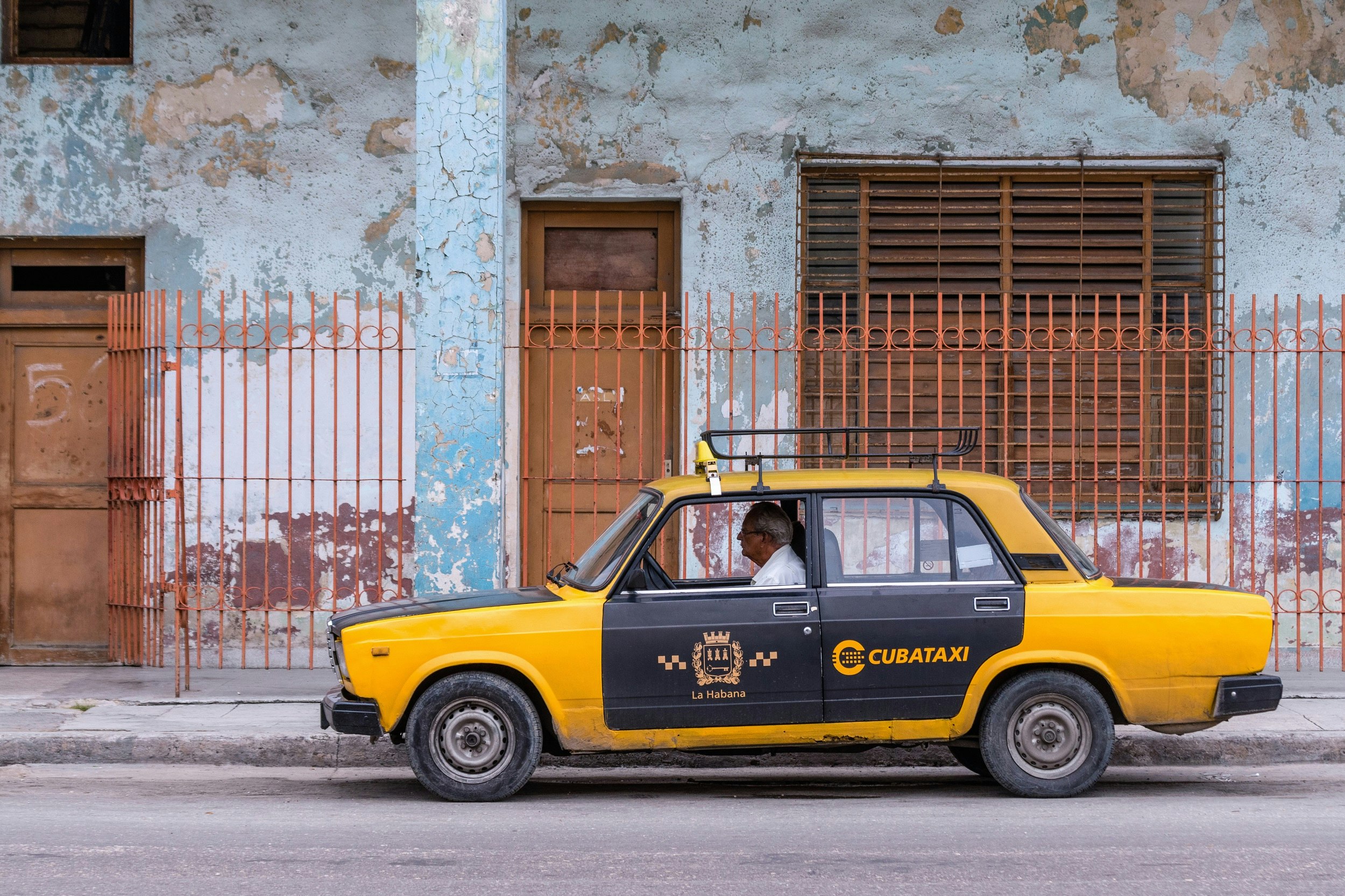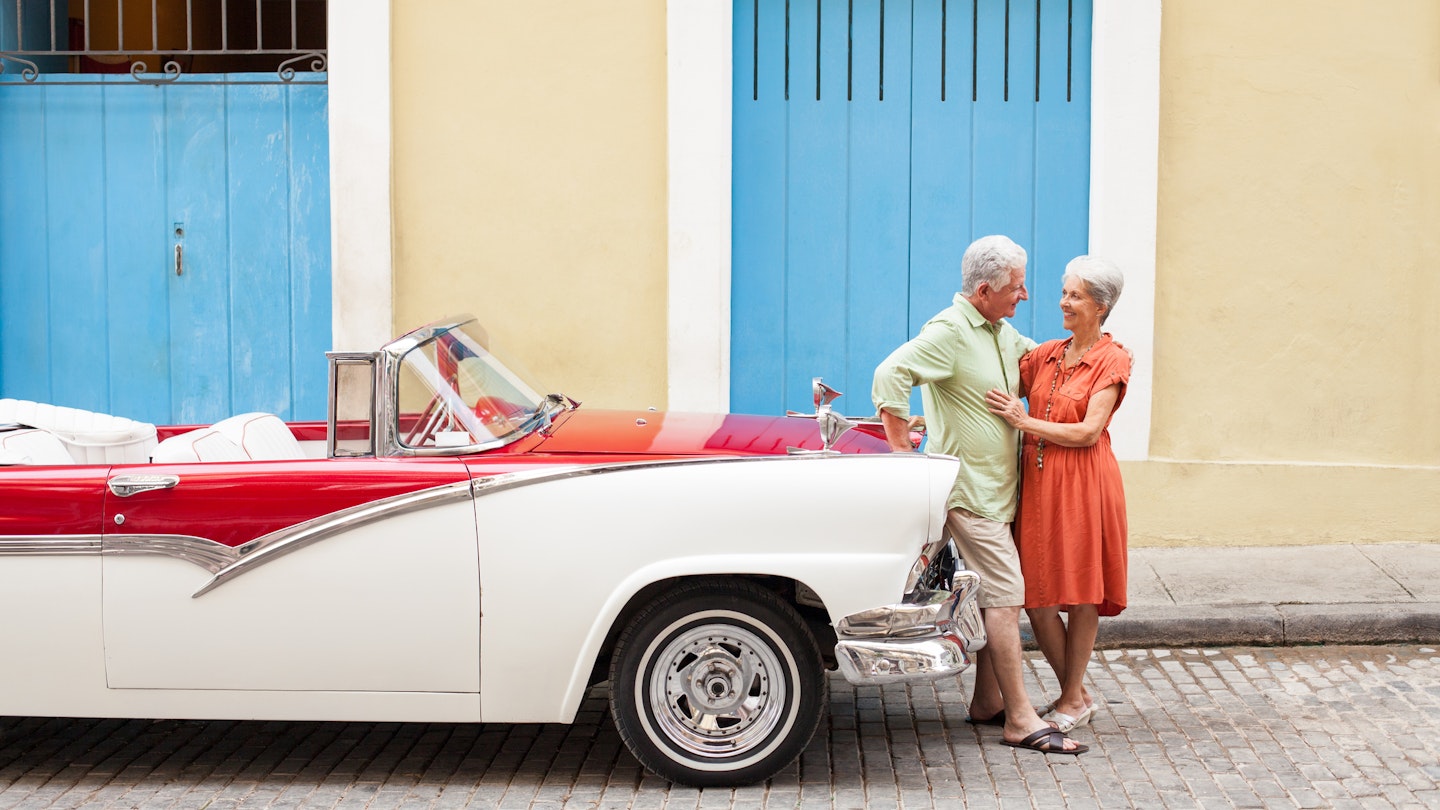Cuba might not have a lot of things in common with its US neighbor, but in the six decades since the two nations cut economic ties, classic American cars have – ironically – become one of the country’s most recognizable symbols. Offering a vivid reflection of Cuba’s decadent 1950s heyday, they have also become a popular tourist attraction.
American cars have survived for decades due to their owners' ingenuity
Cuba is one of the few countries in the world where most private automobiles are older than their owners. Due to the interminable US trade embargo, the streets of Havana and Santiago de Cuba are filled with a rich assortment of aging Buicks, Pontiacs, Oldsmobiles, and Plymouths that hark back to an age when Detriot still manufactured the planet's most sophisticated motors. That these cars are still functioning is a testament to the ingenuity of their owners. Starved of access to spare American parts and unable to afford modern replacements from Japan or Europe, the Cubans have been forced to adapt and be creative. Many of their geriatric cars have been reconfigured and hybridized. What looks like a ’55 Chevy on the outside might well be hiding a Lada engine or the salvaged parts of a Mexican truck underneath.
As a result, a large proportion of the "Yank tanks" that limp asthmatically around the streets of Cuban cities look (and sound) as if they’ve already got one wheel in the scrap heap.
But they're not all old bangers or jalopies. Some Cuban cars have been lovingly coaxed back to life.

Gran Cars are super-slick and stylish autos
Gran Car is a state-run taxi company that uses renovated American autos to ferry tourists around Cuba’s larger cities. Although they charge higher fares than regular taxis, the vintage vehicles are kept in super-slick condition, boldly reflecting the lost grandeur of the 1950s. Forget exploding engines or invasive body rust: Gran Cars are well-polished and effortlessly stylish beasts.
Shop around and you’ll soon be pondering over whether to jump into a 1941 Ford convertible or a bubble gum pink Chevy Bel Air with leather seats. Gran Car's vehicles are specifically used for city tours with a congenial chauffeur dressed in a guayabera shirt and wide-brimmed straw sombrero doubling up as a guide. The tours are particularly popular in Havana, where drivers wait – fastidiously polishing their automobiles – in and around Parque Central. Bank on around €30 (US$34) for a one-hour tour taking in Havana’s main sights, including an obligatory ride along the Malecon sea-drive, dodging giant waves. Drivers pay a monthly tax to lease their cars from the company and will generally accept payment in foreign currency. Euros are usually preferred but ask before arranging a trip.
Some cars will take you farther afield. You can tour Cuba for a week in a classic car with Cubautos Traveling who can also arrange accommodations in casas particulares (private homestays) at stops along the way. Prices start at around €20 per day for the car and driver, plus an additional €70 per day for meals and accommodation for two.

There's a special way to hail almendrones (colectivos)
For travelers with an itchy desire to go under the radar of Cuba’s confusing economy, a ride in a Cuban-style taxi is an eye-opening experience. Known officially as colectivos but affectionately dubbed almendrones or máquinas by people on the street, shared taxis run along fixed routes in big cities such as Havana where they charge economical fares in Cuban pesos. Almendrones are nearly always old American cars that haven’t benefited from 21st-century botox. And when we say old, we mean old. Stiff doors, belching exhausts, and a top speed of about 40km/h is par for the course in these metaphoric dinosaurs of Detroit.
Almendrones are generally the domain of Cubans who squeeze in five at a time. Tourists rarely use them because they don’t understand the complicated mecánica (local way of doing things) required to hail one, a bizarre and untranslatable system of semaphore-like hand signals. However, with a bit of Spanish and a Cuban friend willing to furnish you with "the knowledge" it’s a unique only-in-Cuba experience you won’t forget in a hurry.

Most Ladas are now private yellow-and-black taxis
Guidebooks and magazine spreads would have you believe that no street in Cuba is bereft of a shabbily romantic Pontiac with an oily muchacho behind the wheel. But the most common car in Cuba is not a handsome Chevrolet Bel Air or a curvaceous Buick, it’s the slightly less sexy Russian Lada closely followed by its oft-forgotten ugly cousin, the ghastly Moskvitch.
Considered something of a cheap joke outside Cuba, Ladas were a prestigious status symbol in the 1970s and '80s when they were given out to Communist Party workers to reward good work. In a country where nothing gets thrown away, plenty of these boxy Soviet-style Fiats remain. These days, a large proportion of Ladas do business as private yellow-and-black taxis. Prohibited from waiting at the official taxi ranks outside tourist hotels (which are reserved for Gran Cars or modern state-owned Cubataxis), Lada taxis spend their days roaming the streets looking for fares. For economy-minded tourists, it is perfectly acceptable to hail one (no complicated hand signals are required) and negotiate a fare before getting in. As far as quality goes, don’t expect seat belts or air-conditioning. But what these Russian relics lack in comfort, they make up for in durability – and price.
Ladas aren’t the only Fiat copies in Cuba. Another remnant of the Cold War is the Polski 126, a car that was licensed by Fiat but manufactured and assembled by Cuba’s former amigos in Poland. Diminutive, yet culturally iconic, the Cubans subsequently nicknamed the cheap, well-built Polski the polaquito (little Pole) and imported it in droves; the country claims to have an estimated 10,000 registered Polski owners. Notwithstanding, despite the car’s cute image and ruthless petrol efficiency vis-a-vis the diesel-guzzling "Yank tanks", it’s unlikely you’ll ever see one gracing the front cover of a glossy travel magazine.
There are also some old British cars cruising Cuba's calles
Rarer than their American cousins but just as handsome – and often as well-kept – are the oft-forgotten cast-offs of Cowley and Coventry. The most popular brand of British car to make it across the Atlantic in the 1950s and '60s (and survive) was the Hillman Minx Series I to Series IIIC, although you may also spot a smattering of Morris Minors and Triumph Heralds.
You may also like:
The 10 places you can't miss visiting in Cuba
The best time to visit Cuba for sunshine, beaches, festivals and more
Exploring Cuba's most gorgeous beaches












